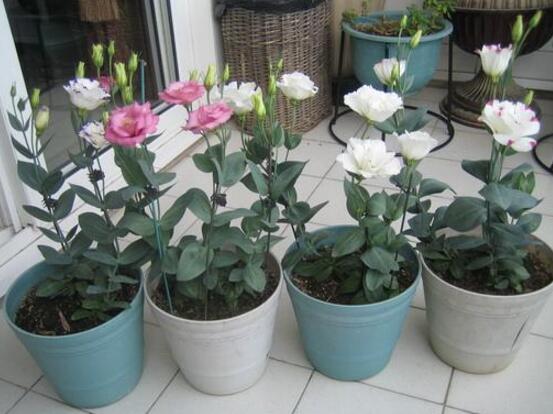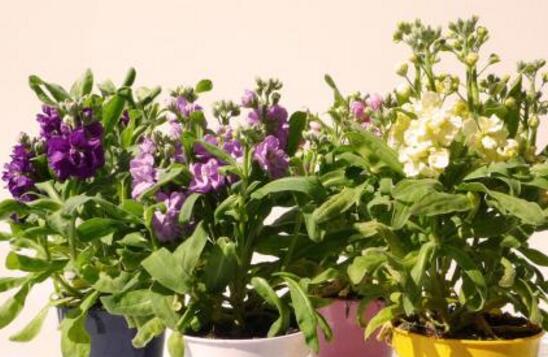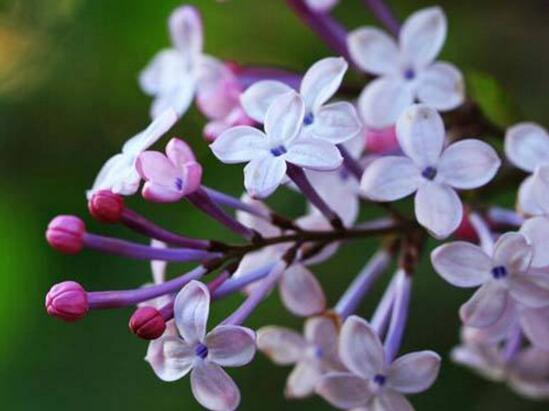How to raise Platycodon grandiflorum, how to raise Platycodon grandiflorum and points for attention / control of watering
Platycodon grandiflorum is a kind of flower native to North America, which is highly ornamental. Nowadays, this kind of plant is planted in many parts of our country, and this plant can also be raised at home. About how to raise Platycodon grandiflorum, what are the breeding methods and precautions of Platycodon grandiflorum? Next, the editor will take you to learn about it.
1. How to raise / control the amount of water for Platycodon grandiflorum

About how to raise Platycodon grandiflorum, in fact, there are many places that need to pay attention to, such as temperature, watering, light and so on, among which watering can not be careless, too much or too little will affect its growth. In the following, there is a detailed explanation of the breeding methods and points for attention of Platycodon grandiflorum, such as friends who want to breed can learn about it.
2. Culture methods and matters needing attention of Platycodon grandiflorum
1. Soil selection
In the cultivation methods and matters needing attention of Platycodon grandiflorum, the choice of soil is more important. Platycodon grandiflorum this kind of plant likes loose soil, and the drainage of such soil will be relatively good. Platycodon grandiflorum can also absorb nutrients better.
two。 Temperature control
The most suitable ambient temperature for the growth of Platycodon grandiflorum is between 15 °C and 28 °C. if the temperature is too low, it will not blossom, and too high temperature will shorten its florescence, so temperature control is particularly important in the process of culture.
3. Watering requirement
When watering Platycodon grandiflorum, the amount is very important. if you water too little, it will lead to the yellowing of plant moisture, and if you water too much, stagnant water will also lead to root rot. so when watering, the soil is generally watered with a certain amount of moisture.
4. Lighting requirement
Platycodon grandiflorum is a promising plant that needs to be exposed to light for a long time, so it is best to keep it in a place with plenty of light, even in summer. However, it can be temporarily moved to the indoor semi-shade for a few hours when the noon temperature is too high.
5. Pest control
If the above points are not followed by the method, it is easy to cause diseases and insect pests of Platycodon grandiflorum. If there is a need for prevention and control, we can refer to the specific prevention and control methods of Platycodon grandiflorum pest control article, here the editor will not introduce too much.
How to raise Platycodon grandiflorum? Culture methods and matters needing attention of Platycodon grandiflorum
Platycodon grandiflorum rich in color, elegant plant, fresh tone, used to decorate the interior, windowsill or balcony can show a sense of freshness and elegance. Platycodon grandiflorum is a perennial plant, as long as it is properly maintained, it can blossom every year. So, how to raise Platycodon grandiflorum? The following is to introduce the culture methods and matters needing attention of Platycodon grandiflorum:
Picture: Platycodon grandiflorum
I. Culture methods of Platycodon grandiflorum
1. Temperature
The suitable growth temperature of Platycodon grandiflorum is 15 ℃-28 ℃. It can endure the low temperature of 0 ℃ for a short time, and the night temperature can not be lower than 12 ℃ during the growing period. If the winter temperature is lower than 5 ℃, the leaves of Platycodon grandiflorum will become rosette and can not blossom. If the summer temperature is higher than 30 ℃, the flowering time of Platycodon grandiflorum will be shortened.
two。 Watering
Platycodon grandiflorum likes a humid environment, but too much water will damage the roots of Platycodon grandiflorum, easy to get sick, and too little water will weaken the growth of the plant and advance the flowering period.
Therefore, watering should be appropriate, not over-watering.
3. Light
Platycodon grandiflorum likes a warm, well-lit environment. Long-term light is conducive to stem and leaf growth and flower bud growth, so it is best to keep 16 hours of light every day.
4. Soil
Platycodon grandiflorum likes fertile and loose soil with good drainage, and it is best to choose improved garden soil with the addition of peat soil, rice bran and a small amount of lime.
Picture: Platycodon grandiflorum
Matters needing attention in the culture of Platycodon grandiflorum
1. Drip irrigation
Platycodon grandiflorum has strict requirements for water, too much water will damage the roots, and too little will lead to weak growth of stems and leaves, so it is best to use drip irrigation, which is most beneficial to the growth of Platycodon grandiflorum.
two。 The potted soil should be disinfected.
If you want to plant Platycodon grandiflorum in pot, the substrate should be treated with high temperature steam or methanol bromide and sterilized, and the pH of the soil should be maintained at 6.5 Mel 7.0.
3. Avoid high temperature and humidity
After the formation of flower buds, it is necessary to avoid high temperature and humidity, otherwise it is easy to cause fungal diseases.
4. Control the amount of fertilizer application
Before planting Platycodon grandiflorum, barnyard manure and bone meal should be added to the soil as base fertilizer, because Platycodon grandiflorum has a large demand for fertilizer, so topdressing should be applied in time in the process of growth.
Culture method of Platycodon grandiflorum how to raise Platycodon grandiflorum
Platycodon grandiflorum is rich in color, fresh and elegant in tone, and is often used to decorate the balcony or windowsill of the bedroom with potted culture. How to raise Platycodon grandiflorum? Then Xiaoqi shared the culture method of Platycodon grandiflorum.
First, how to raise Platycodon grandiflorum
The ecological condition of the origin of Platycodon grandiflorum is the dry environment of annual rainfall 300~800mm, so Platycodon grandiflorum should avoid waterlogging. It takes a period of low temperature before flowering, usually in summer. The seedlings were raised in autumn and winter, planted from February to March, flowered from June to July, sowed in July, planted in autumn, and flowered from April to June the following year. Temperature is a very important factor in the growth and development of Platycodon grandiflorum.
There are many varieties of Platycodon grandiflorum, including white, pink, yellow, rose and purple according to flower color, cup-shaped, bell-shaped and funnel-shaped according to flower shape, single and double petals according to petals, early, late and middle according to growth period.
2. Planting method of Platycodon grandiflorum
1. Light: Platycodon grandiflorum is sensitive to light, and long-day notes promote its stem and leaf growth and flower bud formation, and the light effect of 16 hours a day is the best. In winter and early spring, special attention should be paid to replenishing light, usually for an additional 2-4 hours at night.
2. Temperature: the suitable temperature for the growth of Platycodon grandiflorum is 20: 24 ℃ in daytime and 16: 18 ℃ at night. Its growth rate, such as the elongation of internodes, the speed of flower bud differentiation and the length of harvest period, are easily affected by temperature. Especially in the seedling stage, high temperature will lead to a decrease in the number of flowers, excessive growth of superior internodes, weak pedicels and low quality, but if the temperature is too low, growth will be slow or even do not blossom.
3. Fertilization: Platycodon grandiflorum is a plant that needs a high amount of fertilizer. If the base fertilizer is not enough, topdressing is very important. If the stem is easy to break or the stem is longitudinally split in the middle and later stage of growth, it may be caused by boron deficiency. Spraying plants with dilute solution of boric acid can improve this phenomenon.
4. Watering: Platycodon grandiflorum has strict requirements for water, too much water will cause poor root growth, but also easy to infect diseases; too little water will make stems and leaves weak and blossom earlier. In order to keep the medium moist within one month after transplantation, drip irrigation can be used to control moisture, especially after bud formation, the growth environment of high temperature and humidity should be avoided as much as possible.
5. Diseases and insect pests: the common diseases of Platycodon grandiflorum are Blight, Botrytis cinerea, Sclerotinia sclerotiorum and so on. In addition to timely extraction of diseased plants, removal of diseased leaves and diseased flowers, application of Kangkuning, carbendazim, mancozeb and other agents for prevention and treatment, it is usually necessary to strengthen ventilation and reduce air humidity.
The above is the introduction of Platycodon grandiflorum culture methods, I believe that after reading, we will know more about how to cultivate Platycodon grandiflorum.
- Prev

How to prune potted violets, how to trim violets (can blossom again)
As we all know, in the efficacy and function of violets, one of its greatest functions is that the flowers are highly ornamental, but in order to maintain the overall beauty in the process of growth, we also need to prune them at an appropriate time, so how to prune potted violets? Let's take a look at the diagram of Violet pruning method.
- Next

The function and efficacy of lilac, breeding indoors can beautify the environment / purify the air
Lilac is a common plant in people's life, which is highly ornamental, and it also has many other functions. What are the specific functions and effects of lilac flowers? Next, the editor will take you to learn about it.
Related
- Fuxing push coffee new agricultural production and marketing class: lack of small-scale processing plants
- Jujube rice field leisure farm deep ploughing Yilan for five years to create a space for organic food and play
- Nongyu Farm-A trial of organic papaya for brave women with advanced technology
- Four points for attention in the prevention and control of diseases and insect pests of edible fungi
- How to add nutrient solution to Edible Fungi
- Is there any good way to control edible fungus mites?
- Open Inoculation Technology of Edible Fungi
- Is there any clever way to use fertilizer for edible fungus in winter?
- What agents are used to kill the pathogens of edible fungi in the mushroom shed?
- Rapid drying of Edible Fungi

